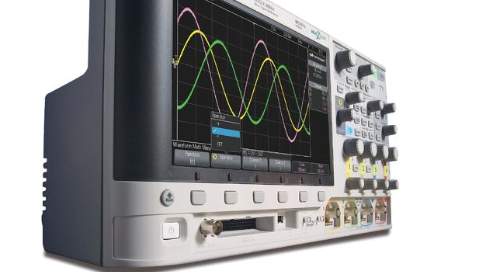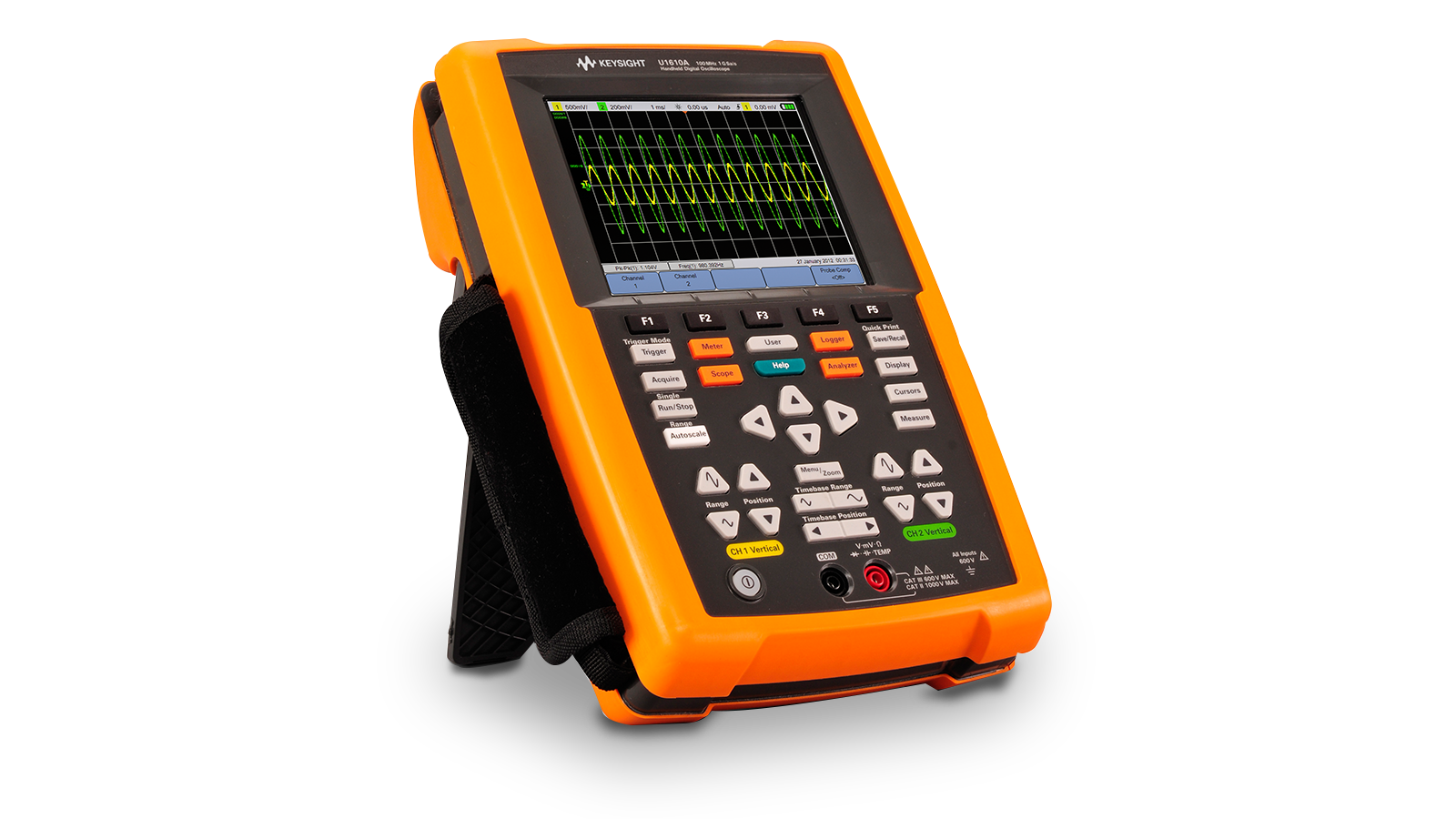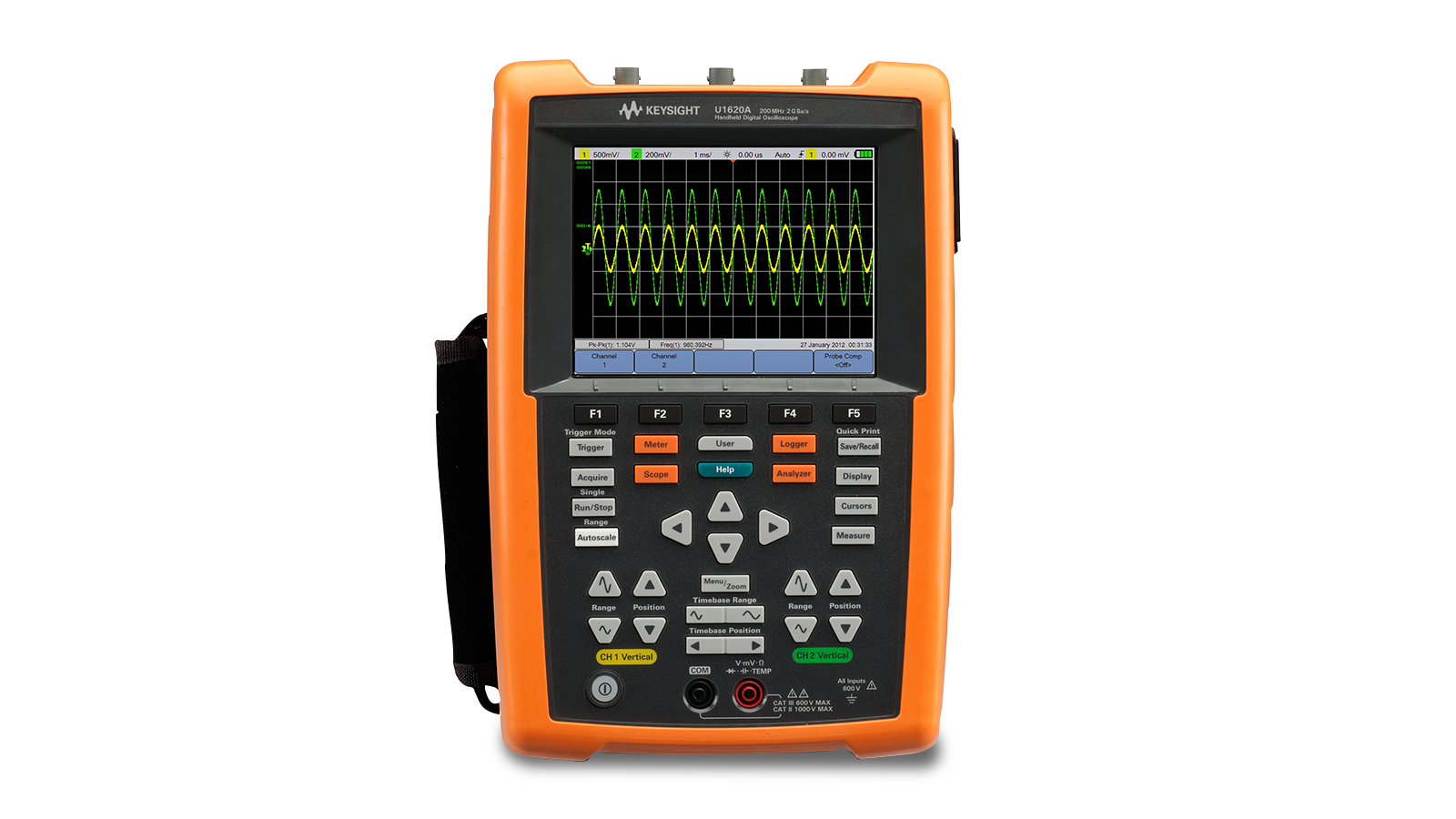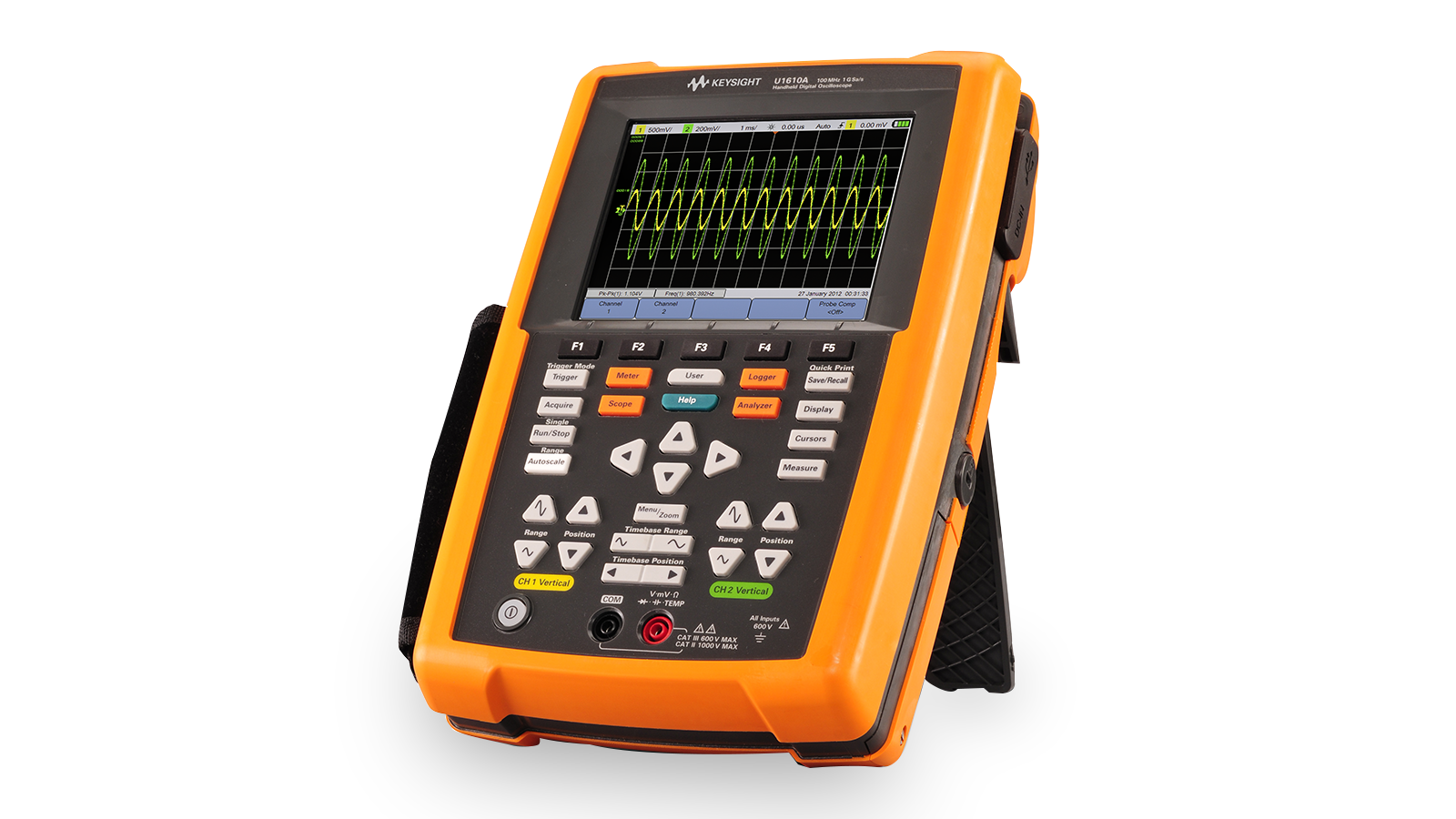What are you looking for?
U1600 Series Handheld Oscilloscopes
Retool your expectations—simplify troubleshooting in the field
Starting from US$ 4,777
Already own this product? View Technical Support
Highlights
Three Capabilities in One Instrument — Color Waveform Display, DMM, and Data Logger
Designed to address the portability needs of various installation and maintenance applications, the U1600 series of handheld oscilloscopes enables clear waveform viewing, easy waveform analysis, and quick isolation of signal glitches. With high-performance features loaded into one robust package, mobile troubleshooting is a breeze.
- Safely perform high-power signal analysis with CAT III 600V channel-to-channel isolation
- Clearly view details with up to 200 MSa/s sample rate and 2 Mpts memory
- Select from 10 localized user interfaces
- Easily identify problem areas and zoom in for more detailed analysis using dual window zoom
- Debug under any lighting condition with three viewing modes (indoor, outdoor, night vision)
Key Specifications
Max Bandwidth
200 MHz
Max Memory Depth
2 Mpts
Max Sample Rate
2 GSa/s
Channels
2 Analog
Connectivity
USB 2.0
Display
5.7" VGA TFT LCD
Want to see more specifications?
Find the Model that's Right for You
EXTEND THE CAPABILITIES
Basic Oscilloscope Fundamentals
Read this application note to gain insight into oscilloscope applications and performance characteristics. You will also learn how to take basic oscilloscope measurements. These lessons apply to handheld oscilloscopes and traditional benchtop oscilloscopes.


Selecting the Right Oscilloscope
If you’re about to invest in an oscilloscope, you need a checklist of what you should look for and why. Part I of the blog, Tips: How to Select an Oscilloscope Before You Buy, covers the details when shopping for an oscilloscope in terms of bandwidth, sample rate, number of channels, display quality, memory depth, and segmented memory.
Part II covers what you should look for regarding an oscilloscope’s waveform update rate, triggering, serial bus applications, measurement, analysis, connectivity, the ability to share remotely, test automation, and document-generating capabilities.
FEATURED RESOURCES
Frequently Asked Questions - Handheld Oscilliscopes
What is a handheld oscilloscope?
A handheld oscilloscope is a portable, compact device that for measures and displays electrical fields. They generally have a built-in display, battery power source, and an intuitive interface, enabling you to conduct measurements and diagnostics in the field.
How does a handheld oscilloscope differ from a traditional benchtop models?
Handheld oscilloscopes are different from benchtop models in the following ways:
• Portability: Handheld oscilloscopes are smaller, lighter, and usually battery-powered, making them easy for you to carry and use in various locations.
• Functionality: While handheld oscilloscopes offer many of a benchtop model’s measurement capabilities, they may have fewer features and less processing power due to their compact size.
• Usability: Handheld models are use in the field, with rugged exteriors and simplified interfaces to facilitate quick measurements.
• Display: They typically have smaller screens instead of the larger, more detailed displays on benchtop models.
What are the typical applications for handheld oscilloscopes?
You can use handheld oscilloscopes in several ways, including:
• Field service and maintenance: Troubleshooting and maintaining electrical equipment, machinery, or systems in the field.
• Industrial control: Monitoring and diagnosing problems in industrial processes and automation systems.
• Automotive diagnostics: Analyzing electrical signals in automotive systems for diagnostic purposes.
• Education and training: Providing students and trainees with hands-on training in electronic signals and systems.
• Research and development: Conducting experiments or tests in environments where traditional oscilloscopes are impractical.
Want help or have questions?













